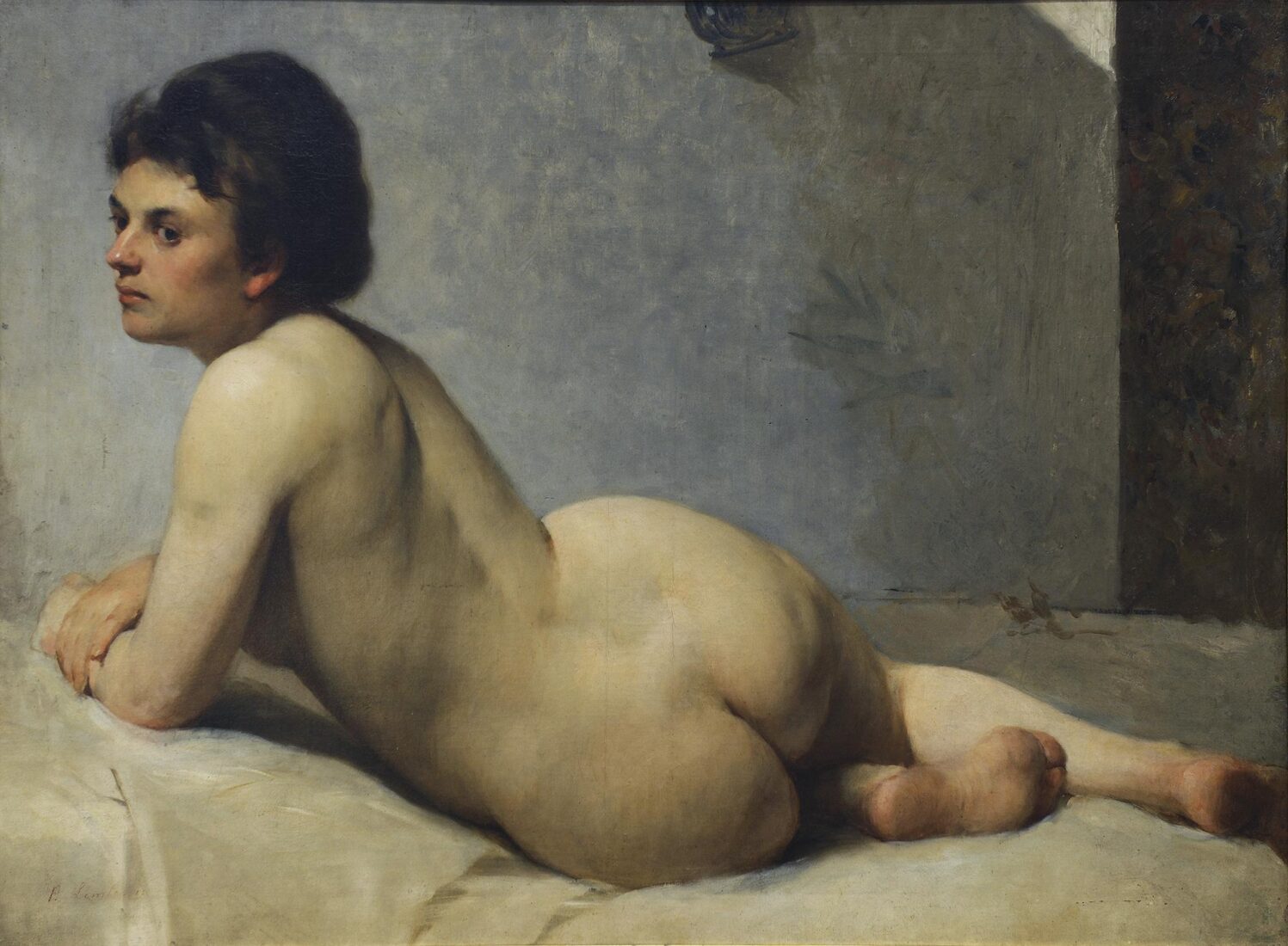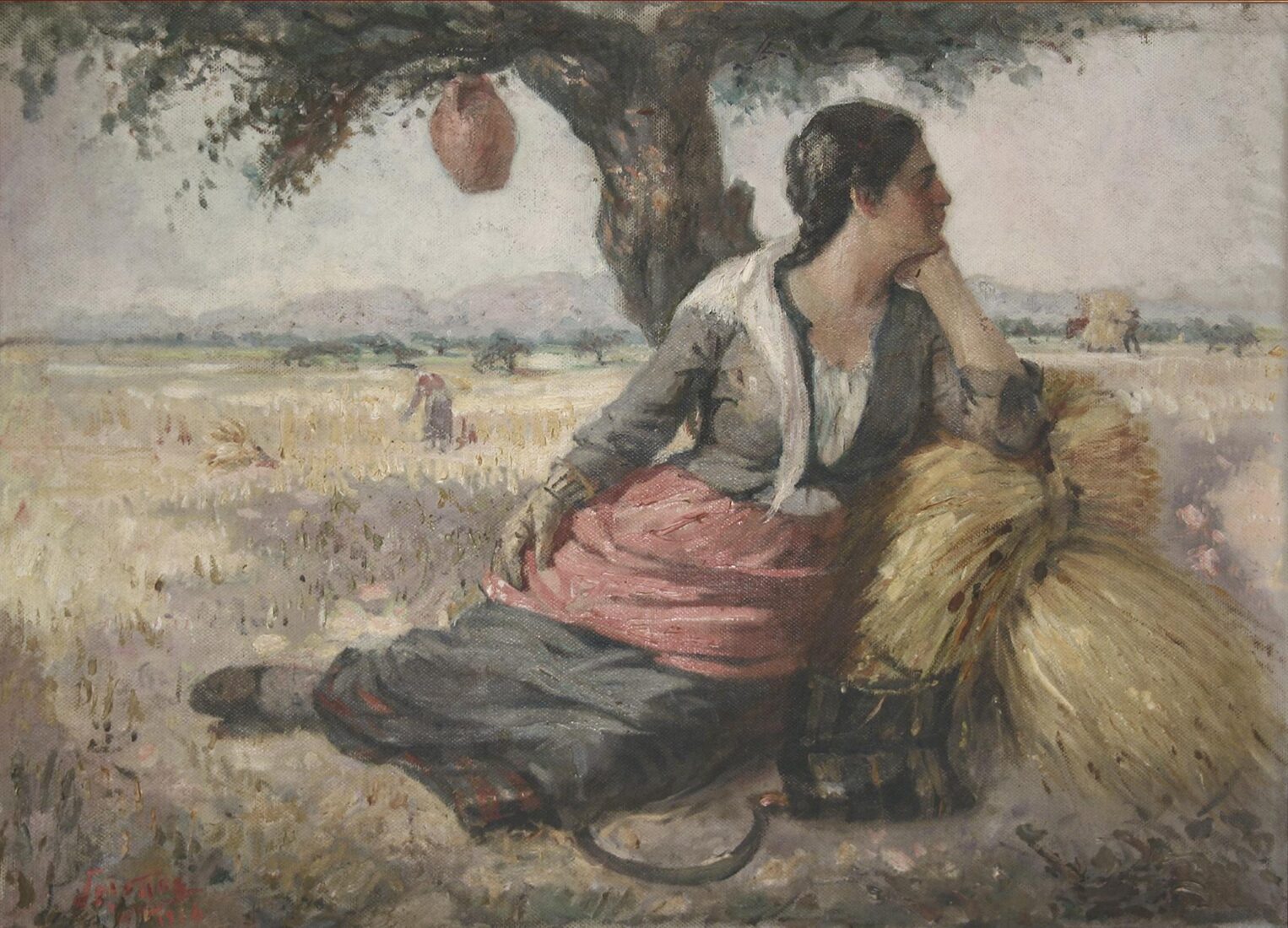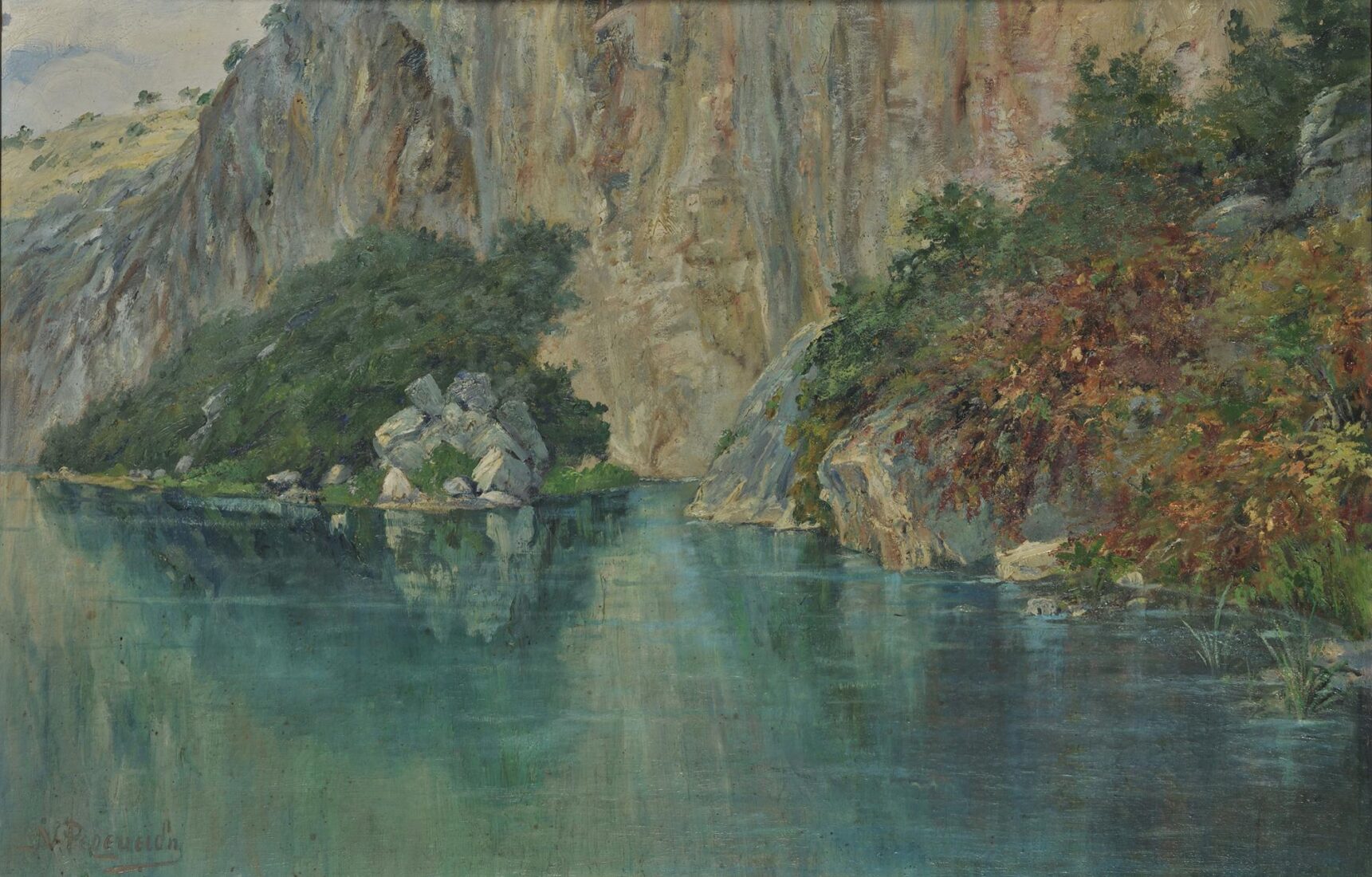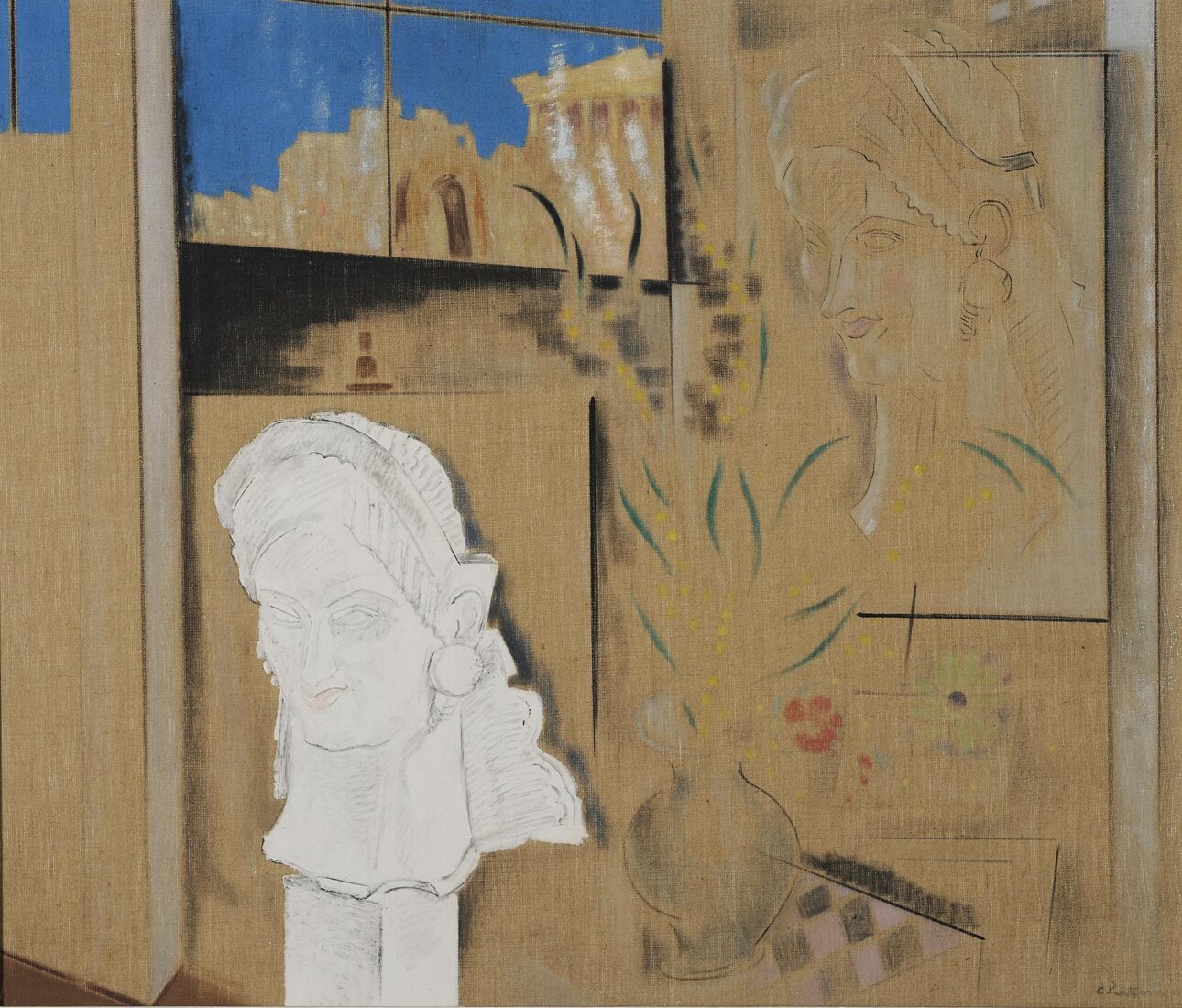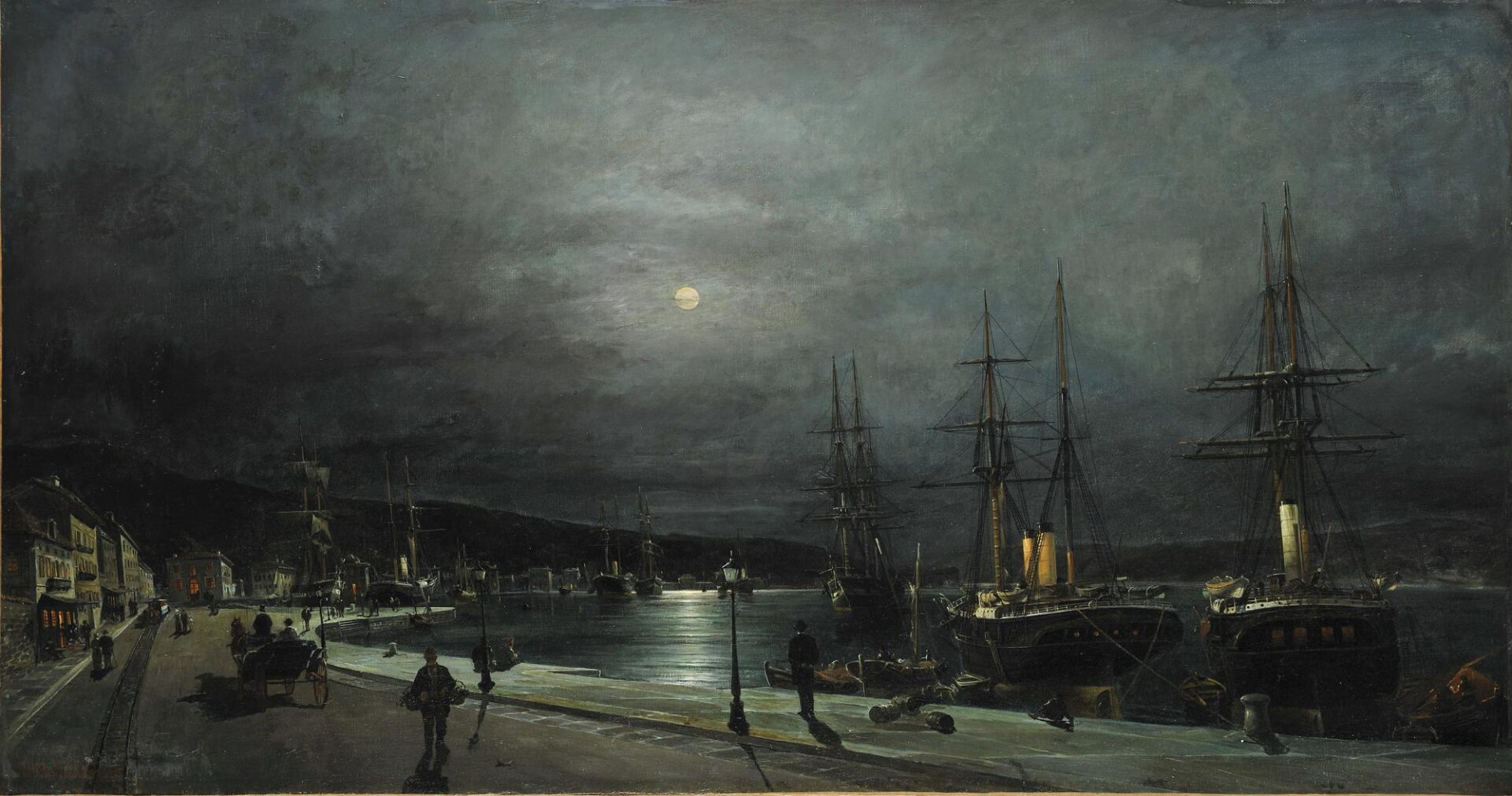

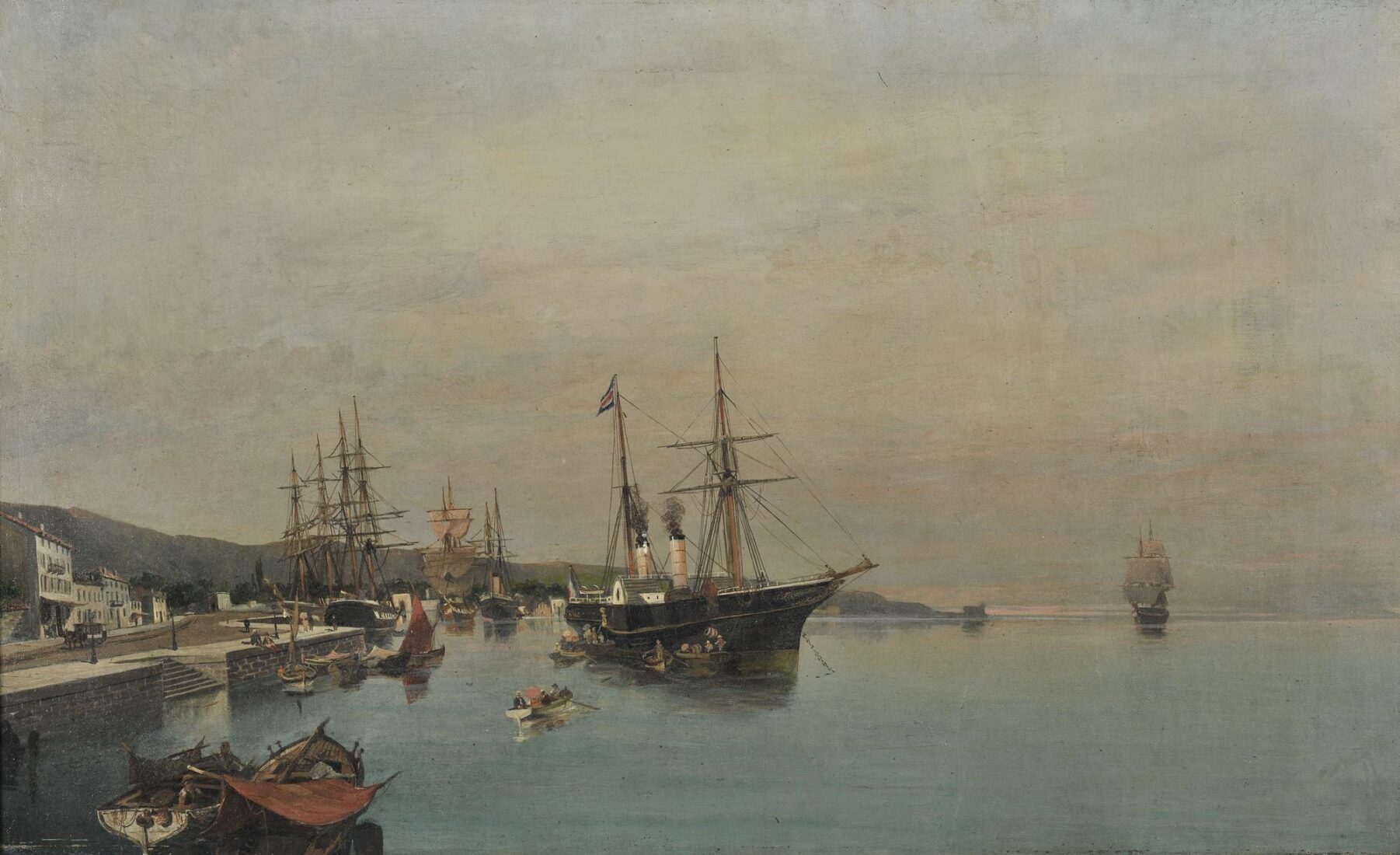
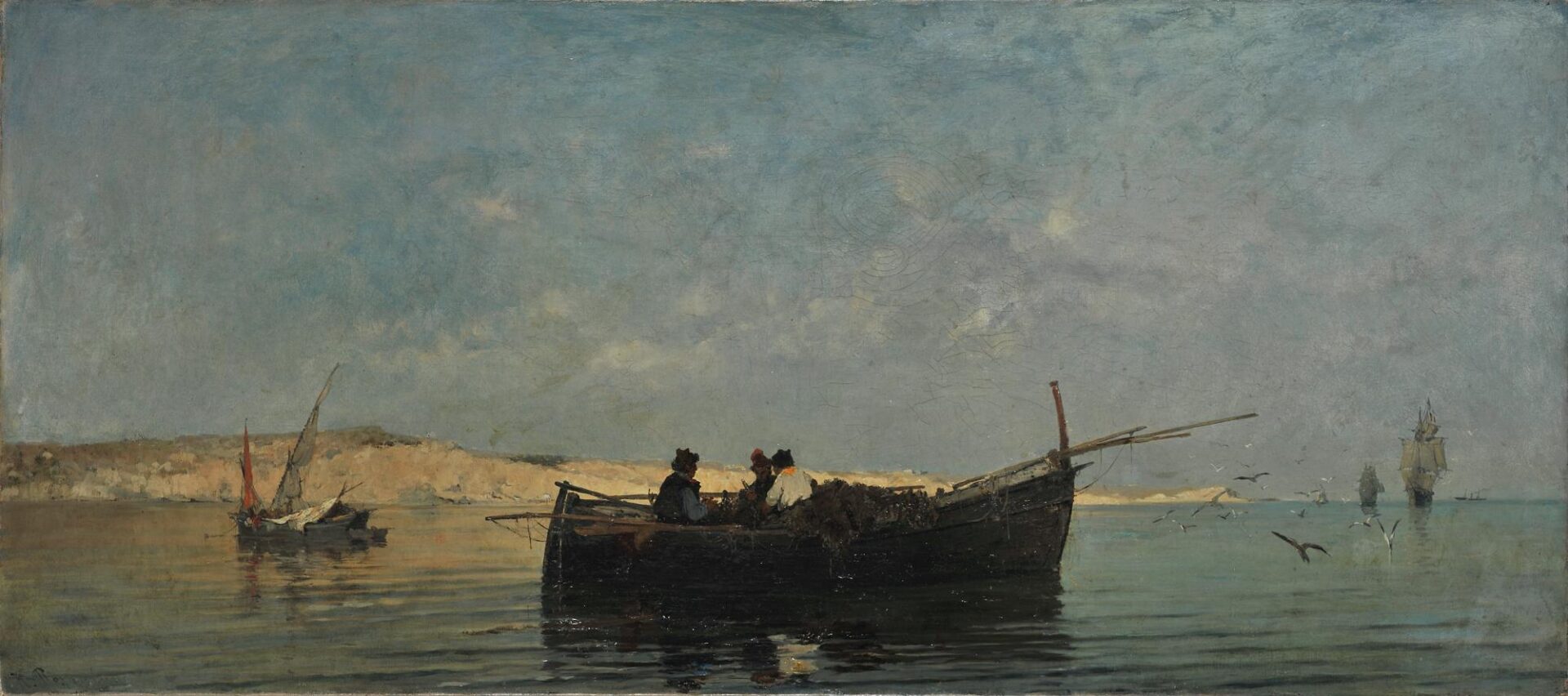
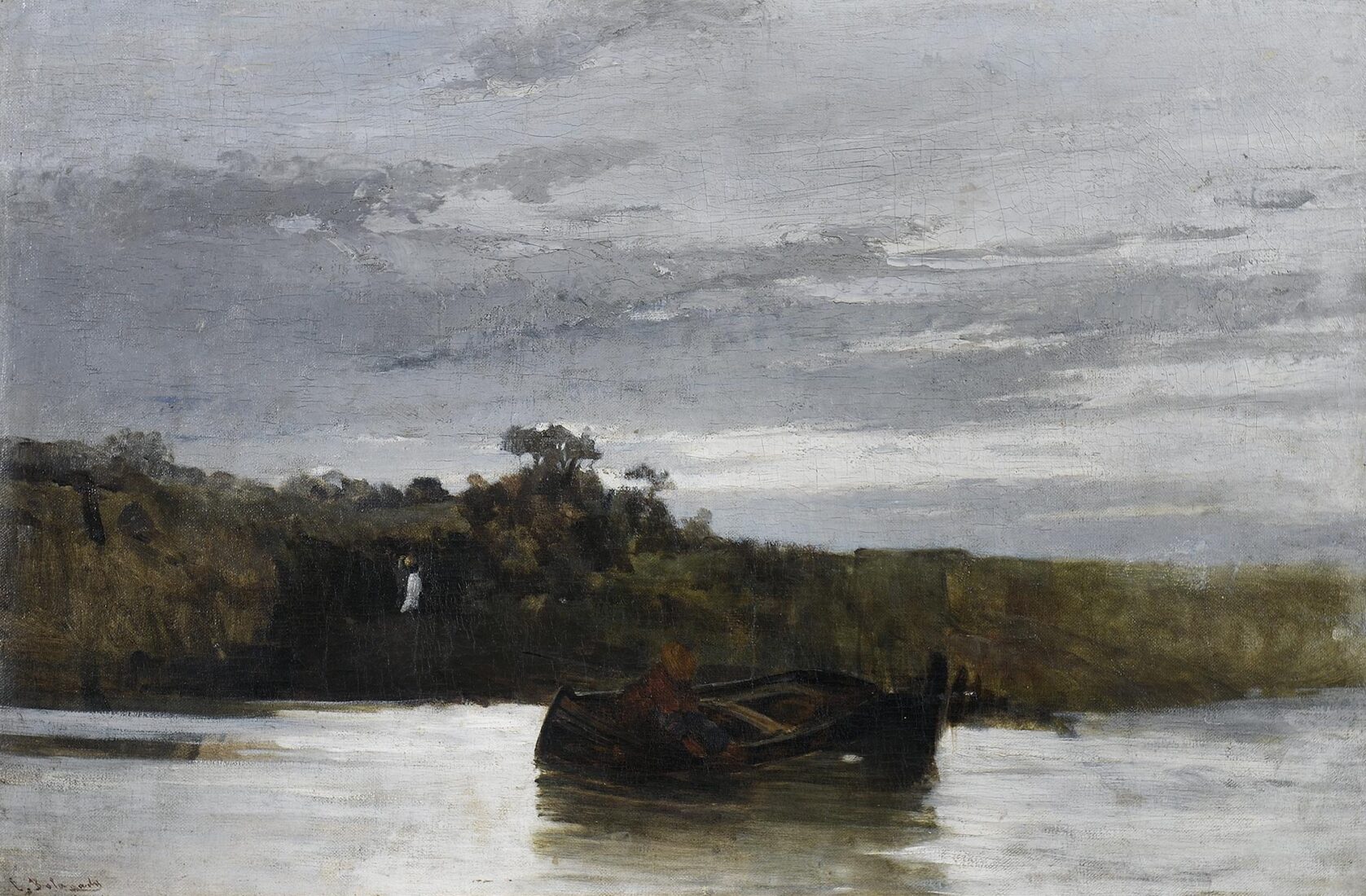
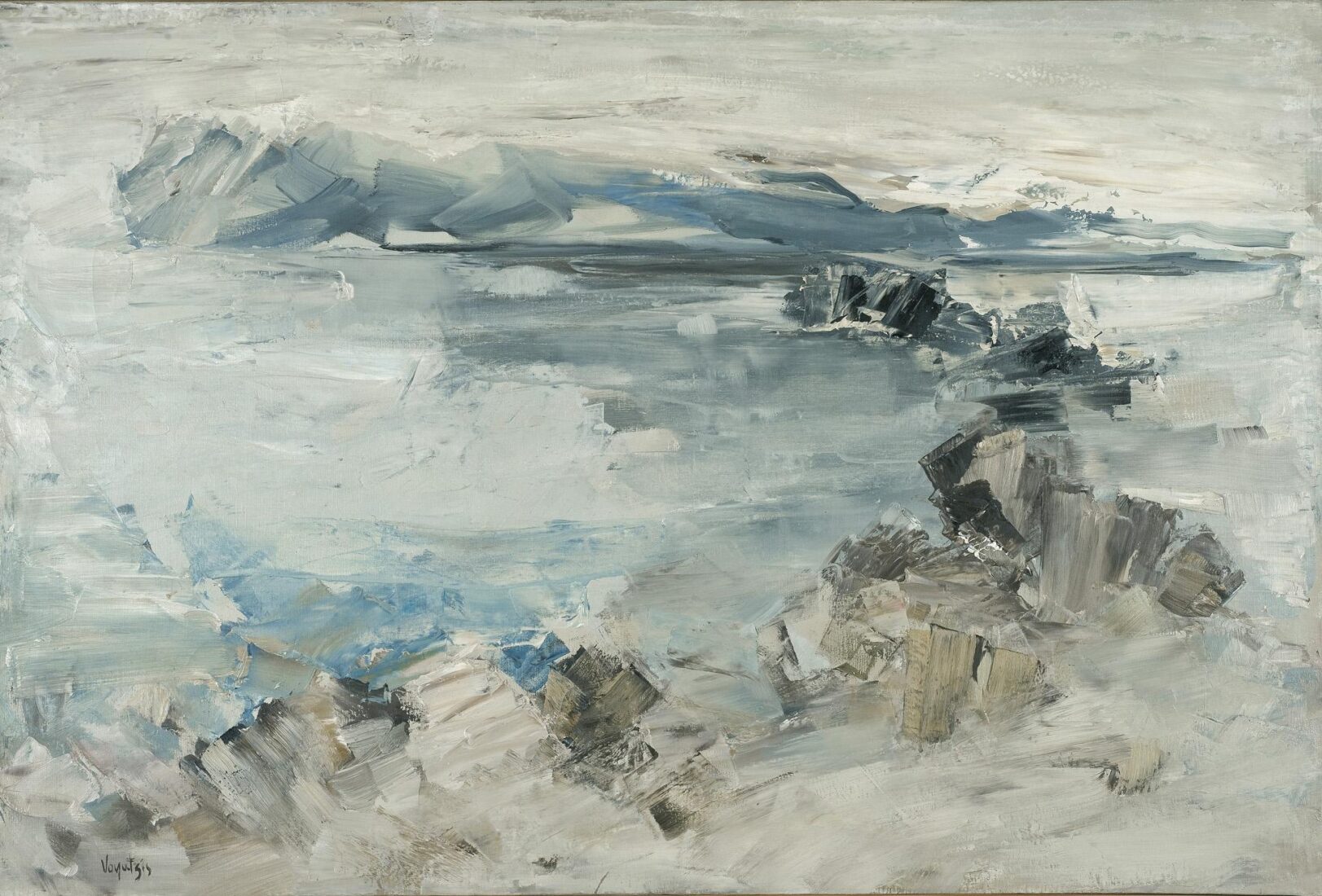
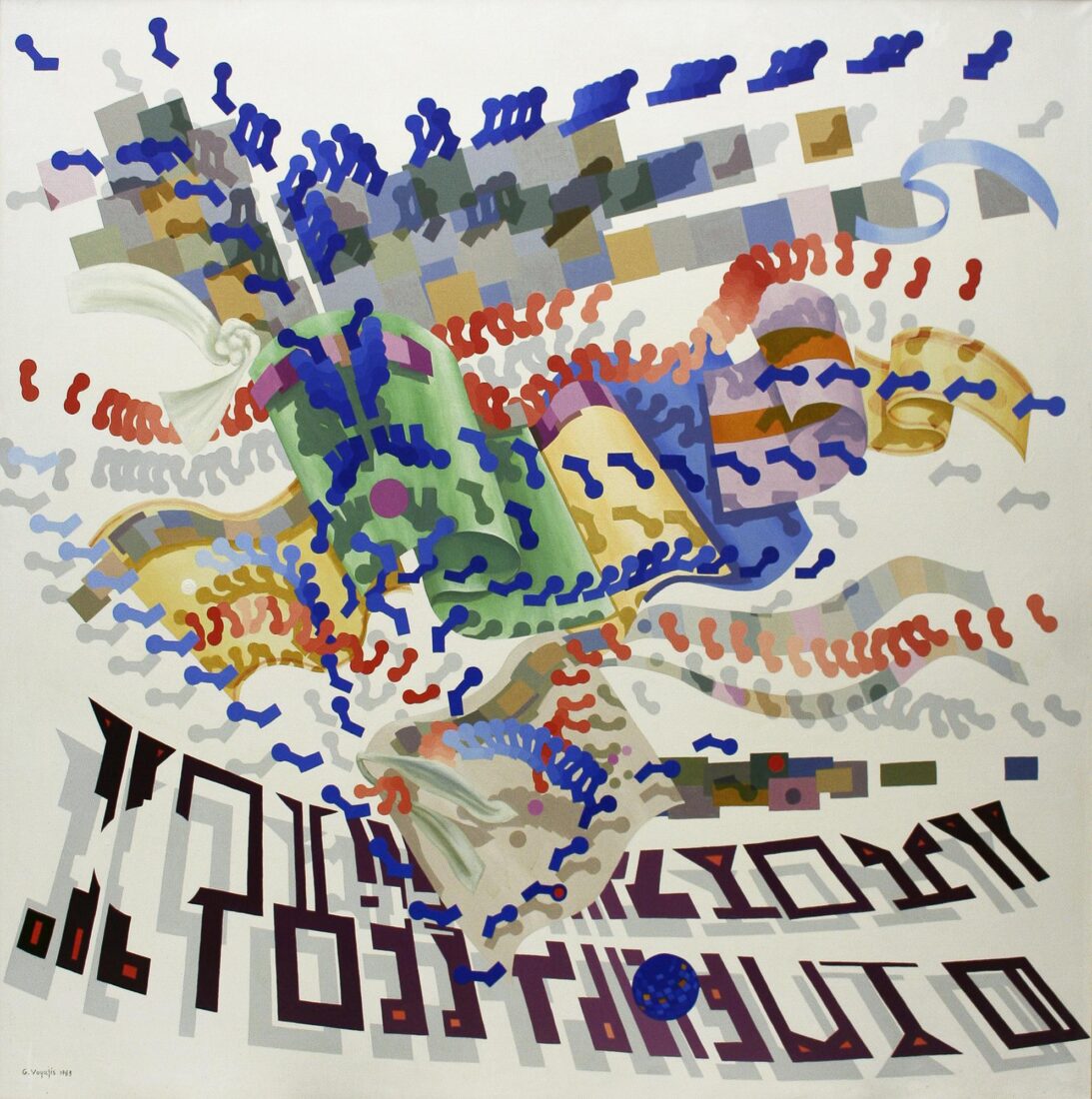
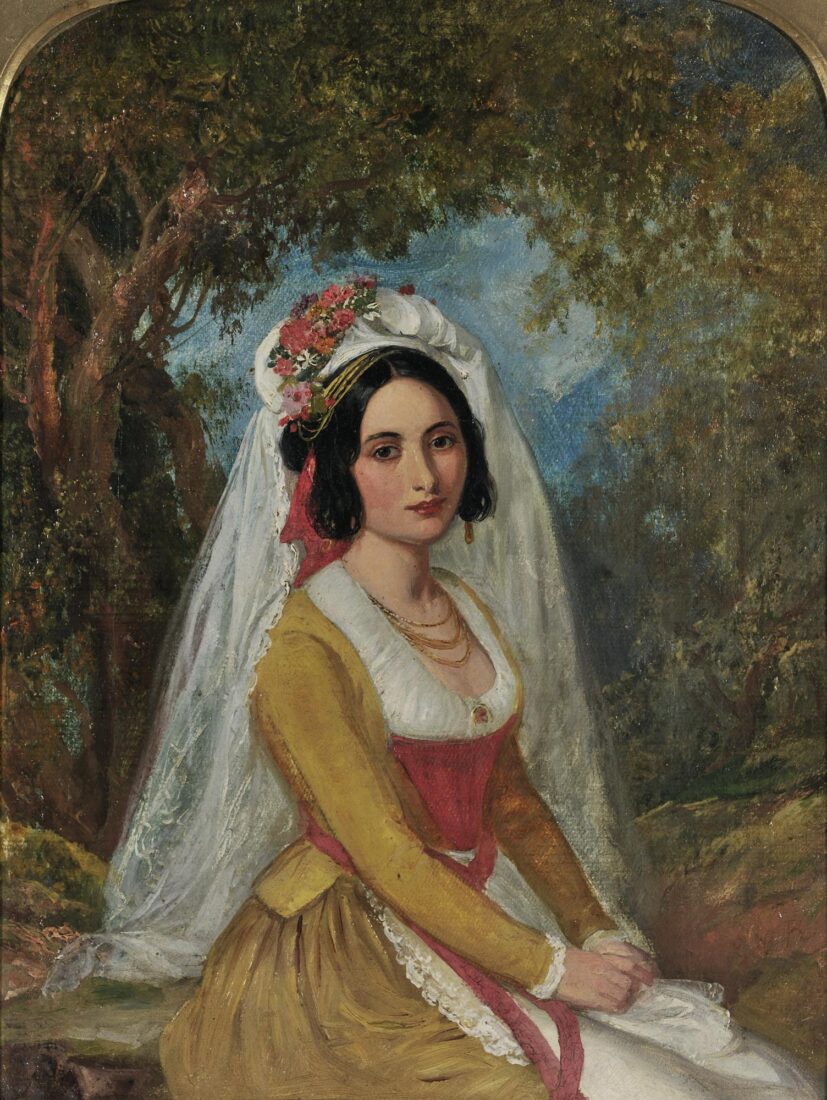
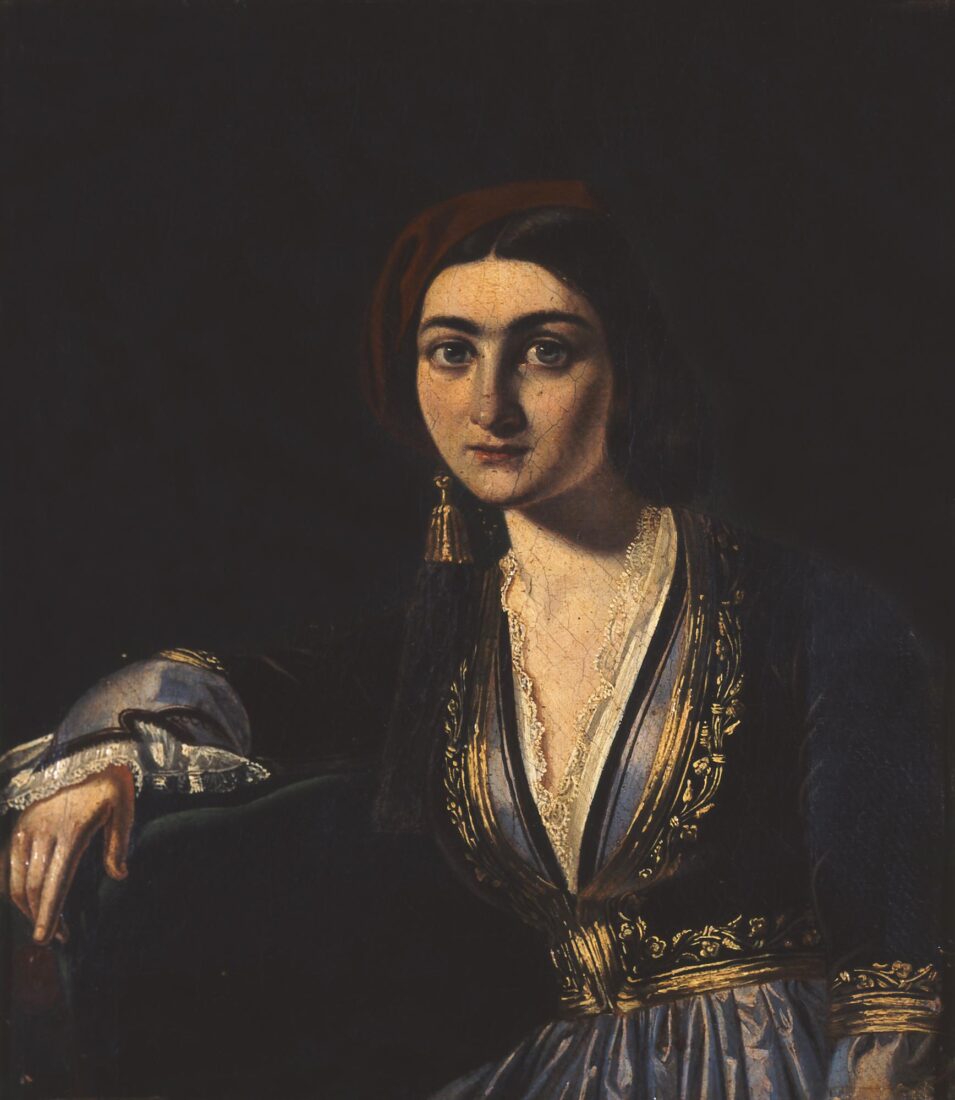
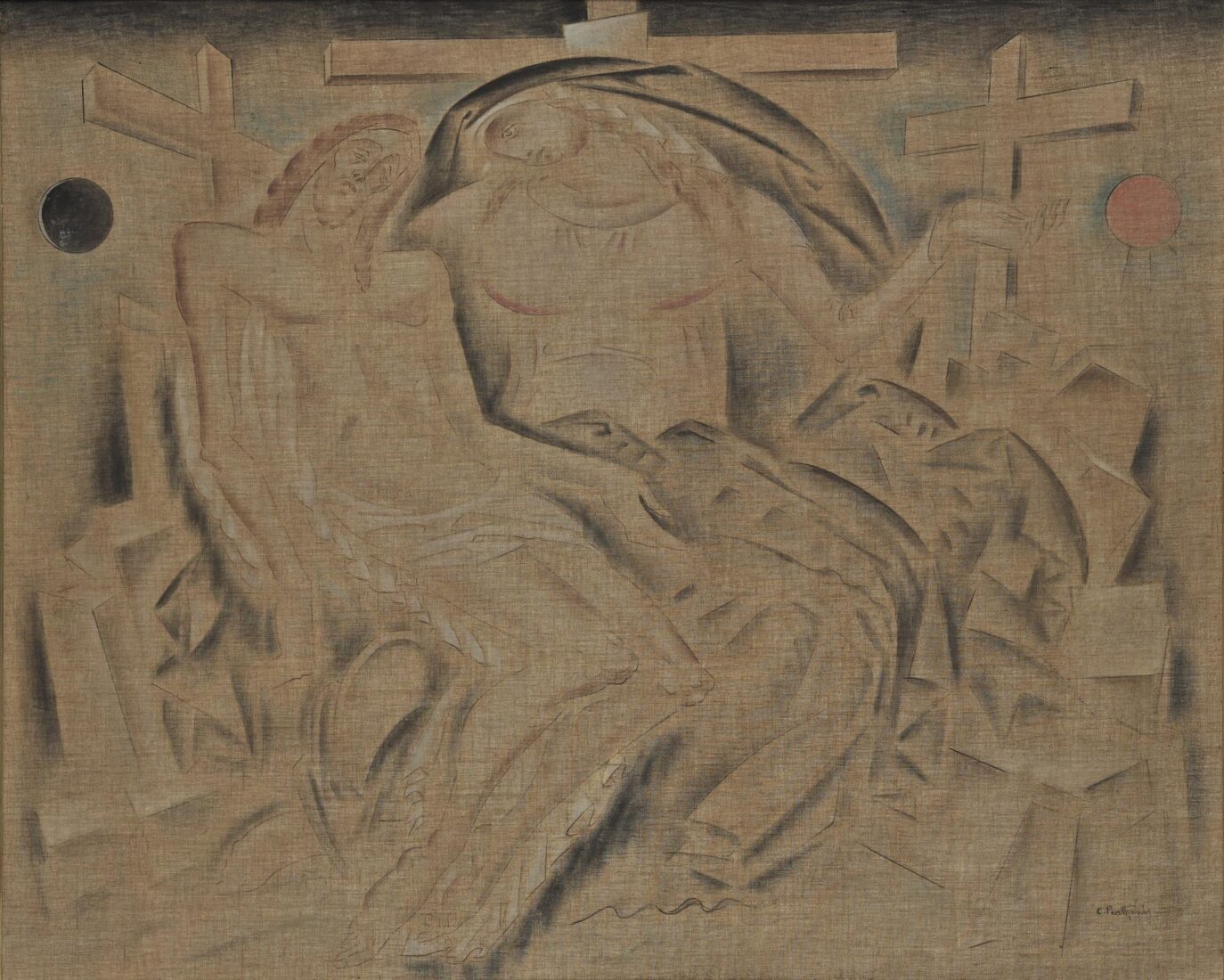
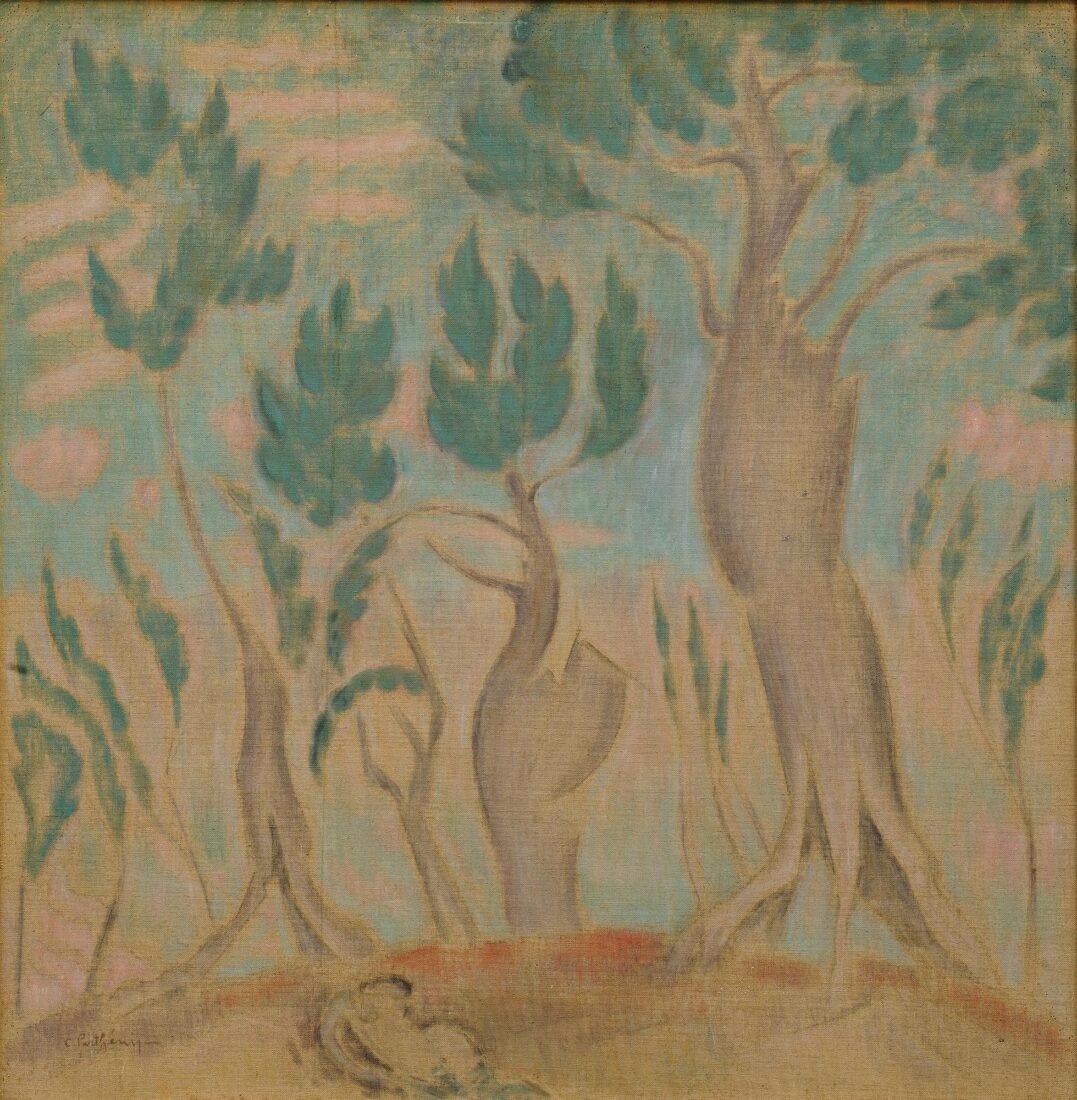
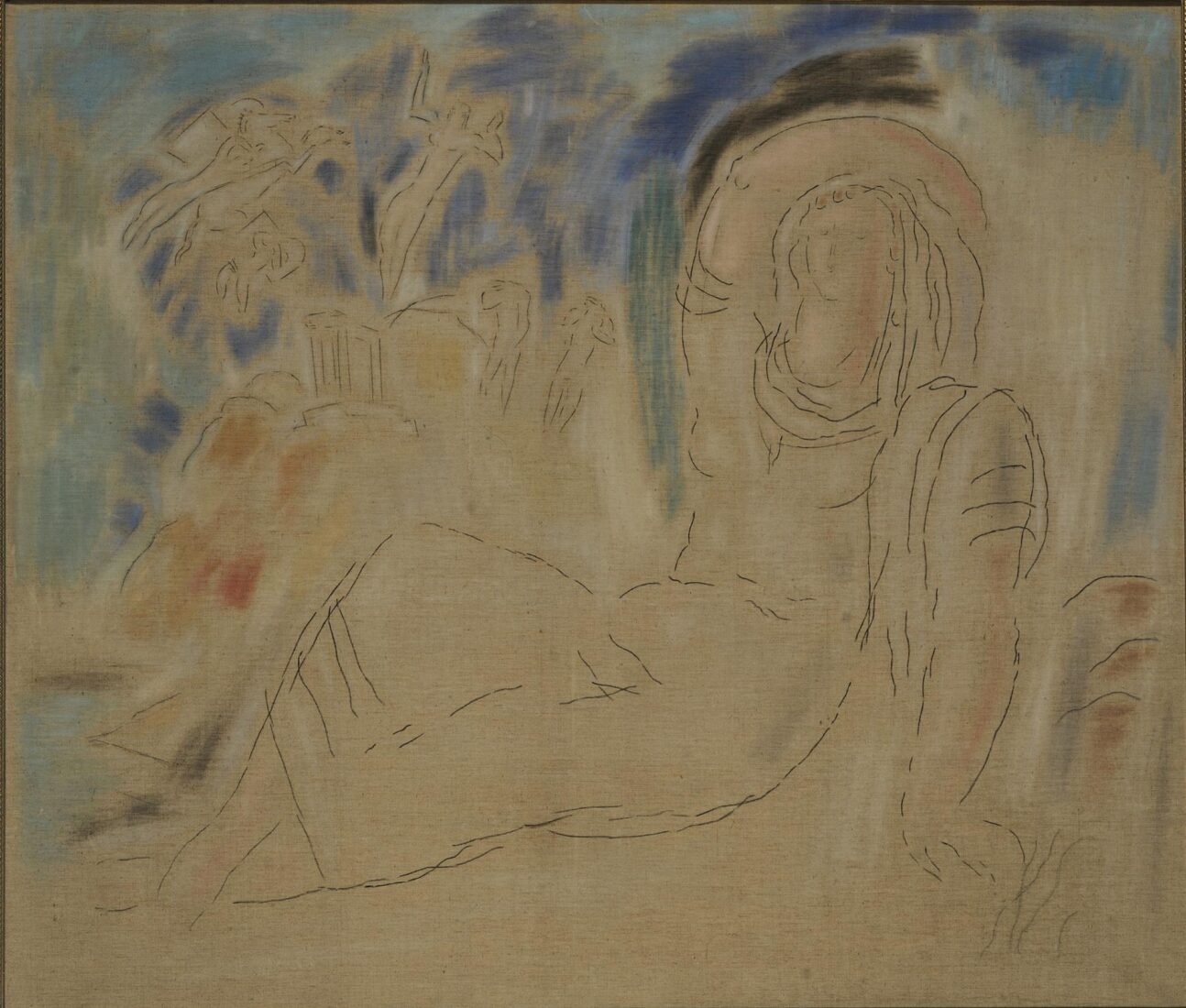
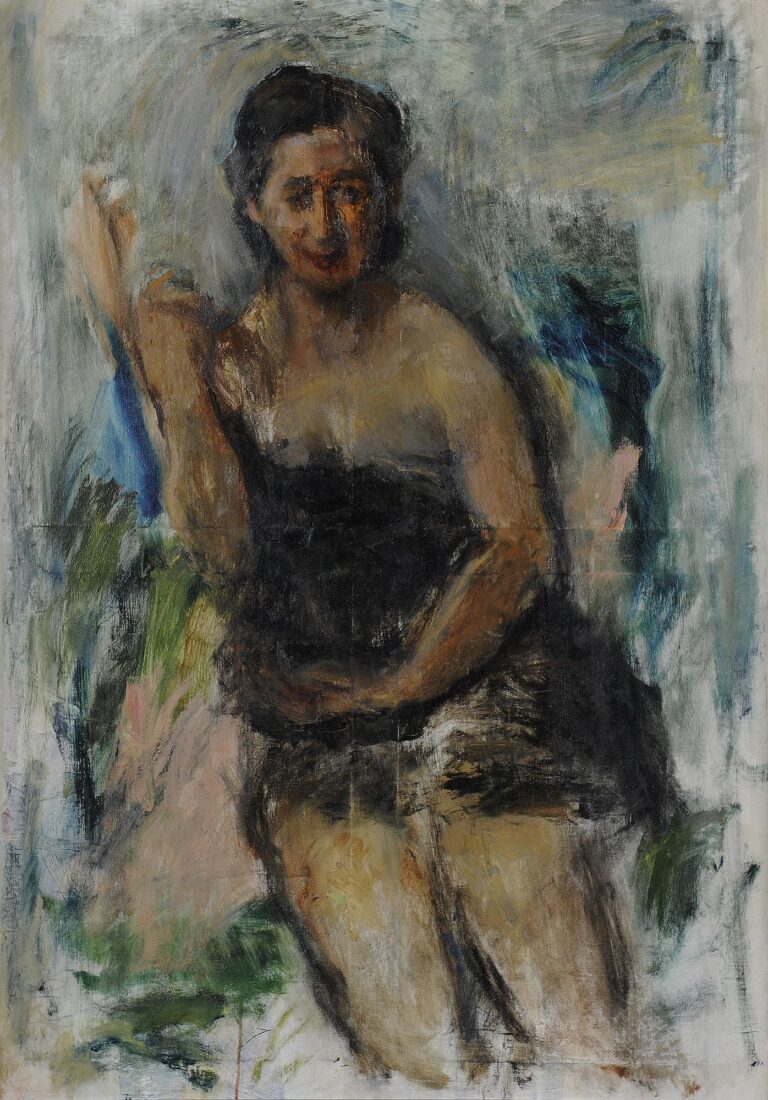
Giorgos Bouzianis studied and spent the greater part of life in Munich, where his work received acclaim. He was a member of the postwar generation of Expressionists, but his oeuvre is primarily associated with the independent Expressionists such the Austrian Oskar Kokoschka and the French Chaim Soutine. Although he painted other subjects including still lifes and landscapes, the human figure predominated in his work. Through strong expressive distortions and a style resembling a palimpsest, Bouzianis succeeded in expressing existential angst, human destiny, the final deterioration and death. His figures are drawn with broad brushstrokes that are digested in a confusion of color. The osmosis of figure and space is so powerful that the figure appears as if it is being born of a painful chromatic hell, of a disruption that betrays a powerful psychic and emotion charge. Bouzianis employs unusual and highly individual color harmonies. His style presages that of de Kooning and other American Abstract Expressionist painters.
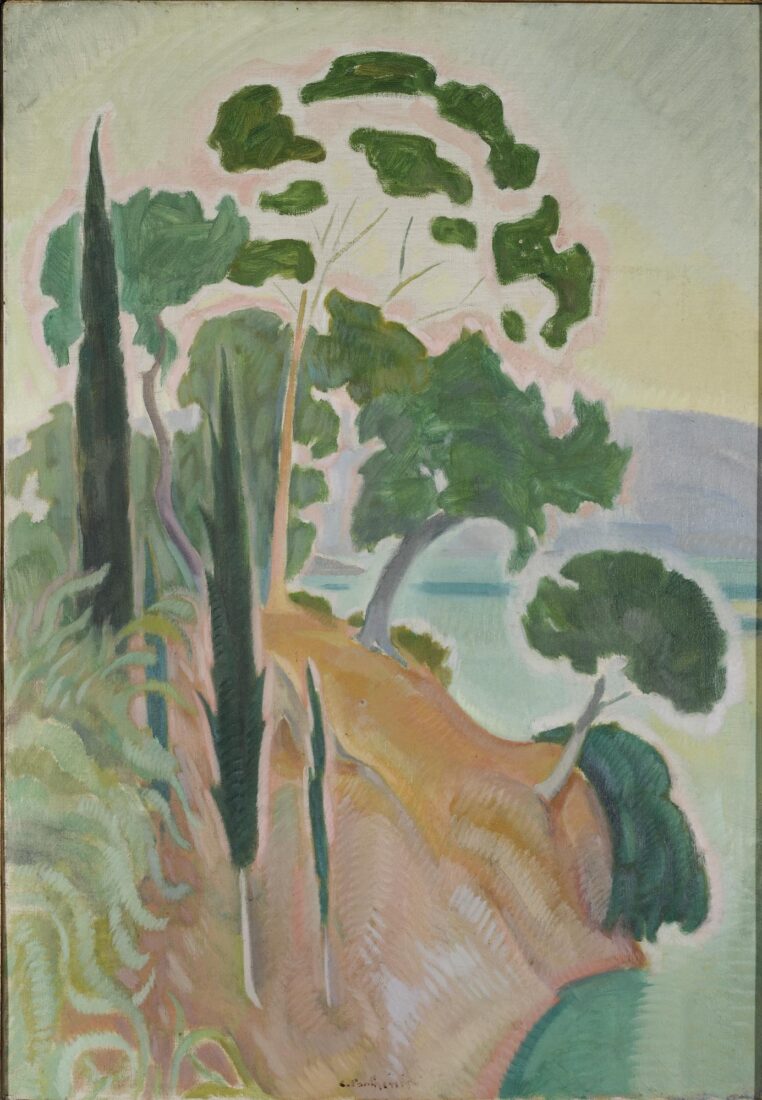
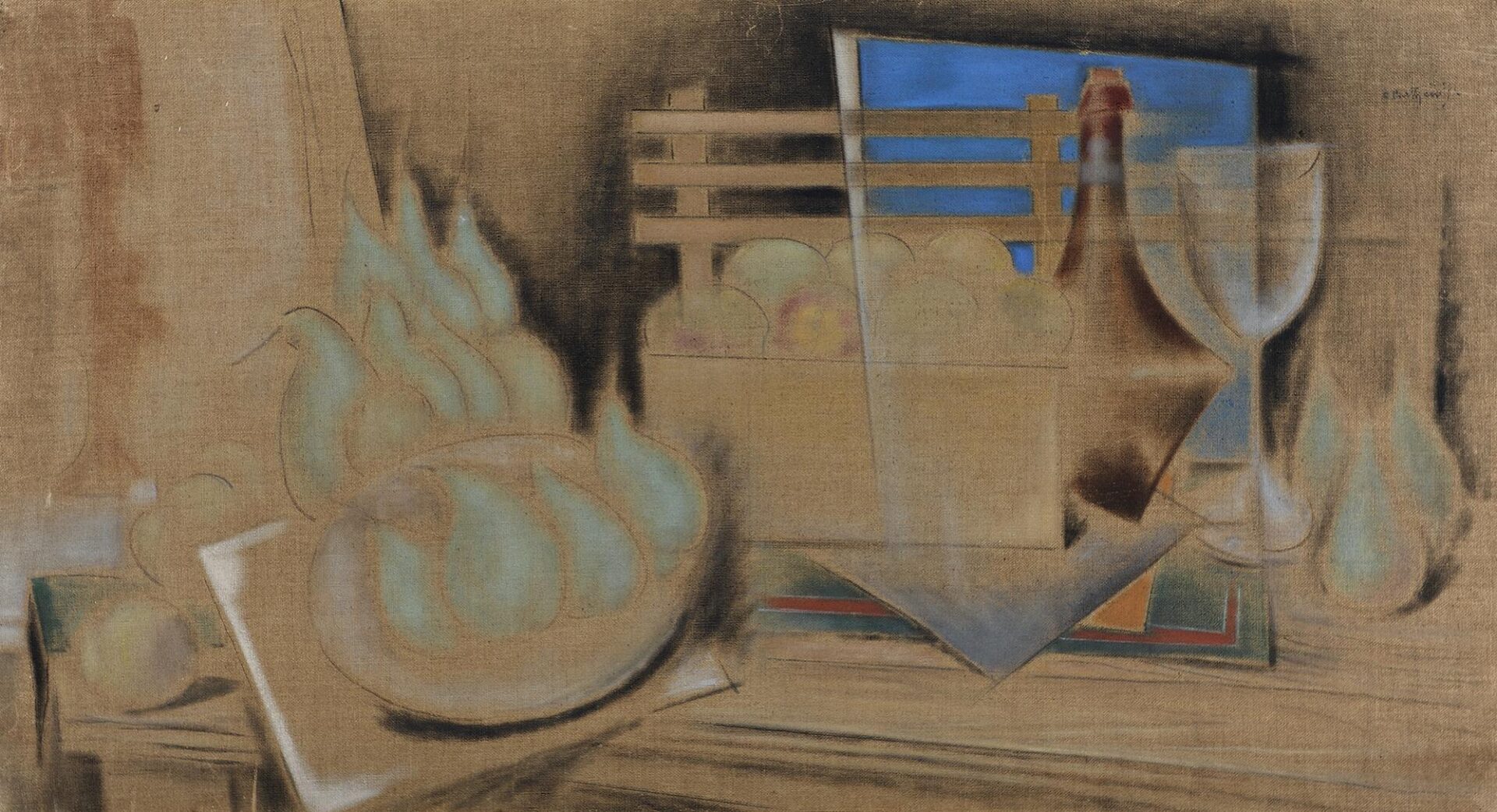
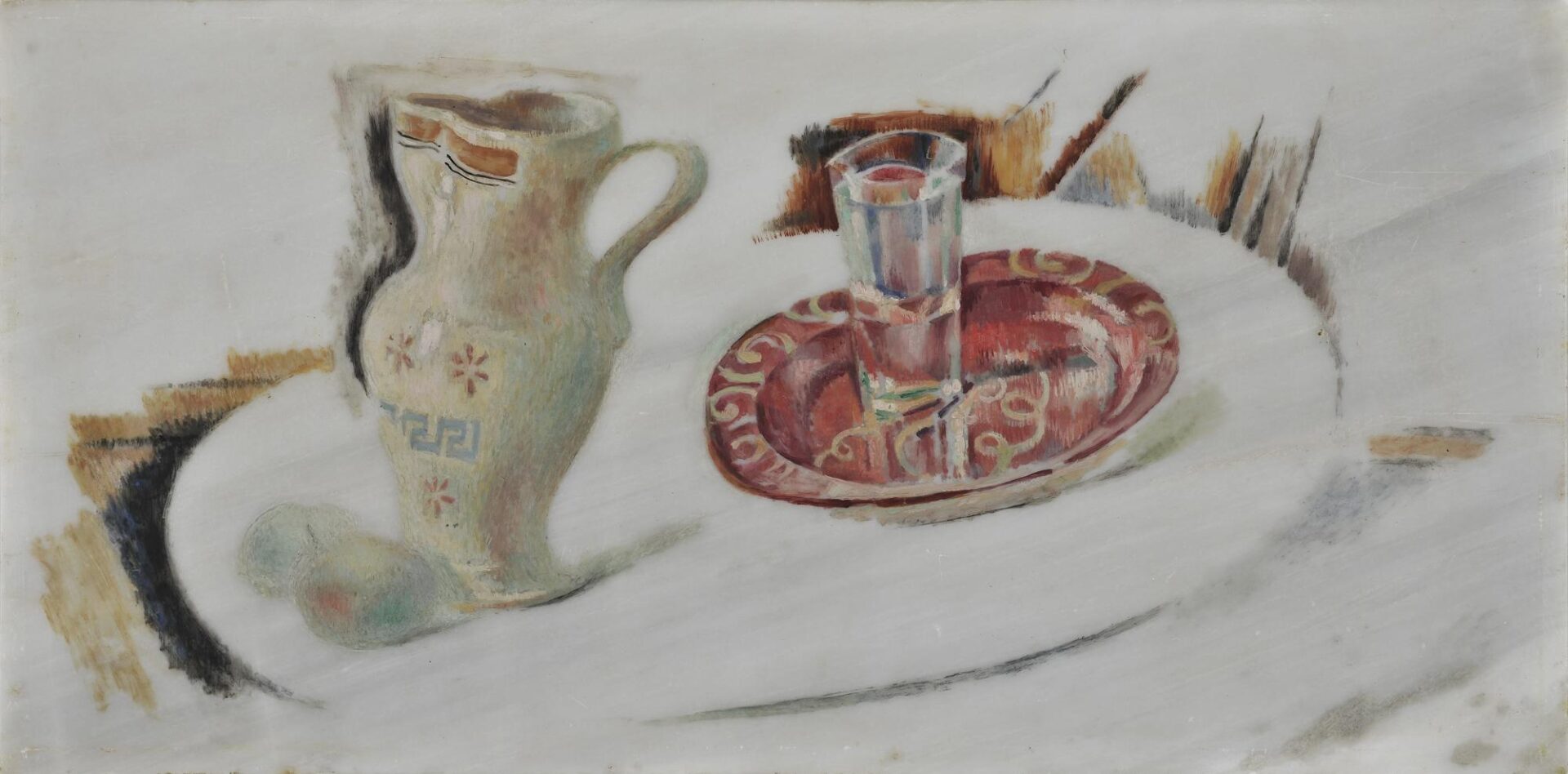
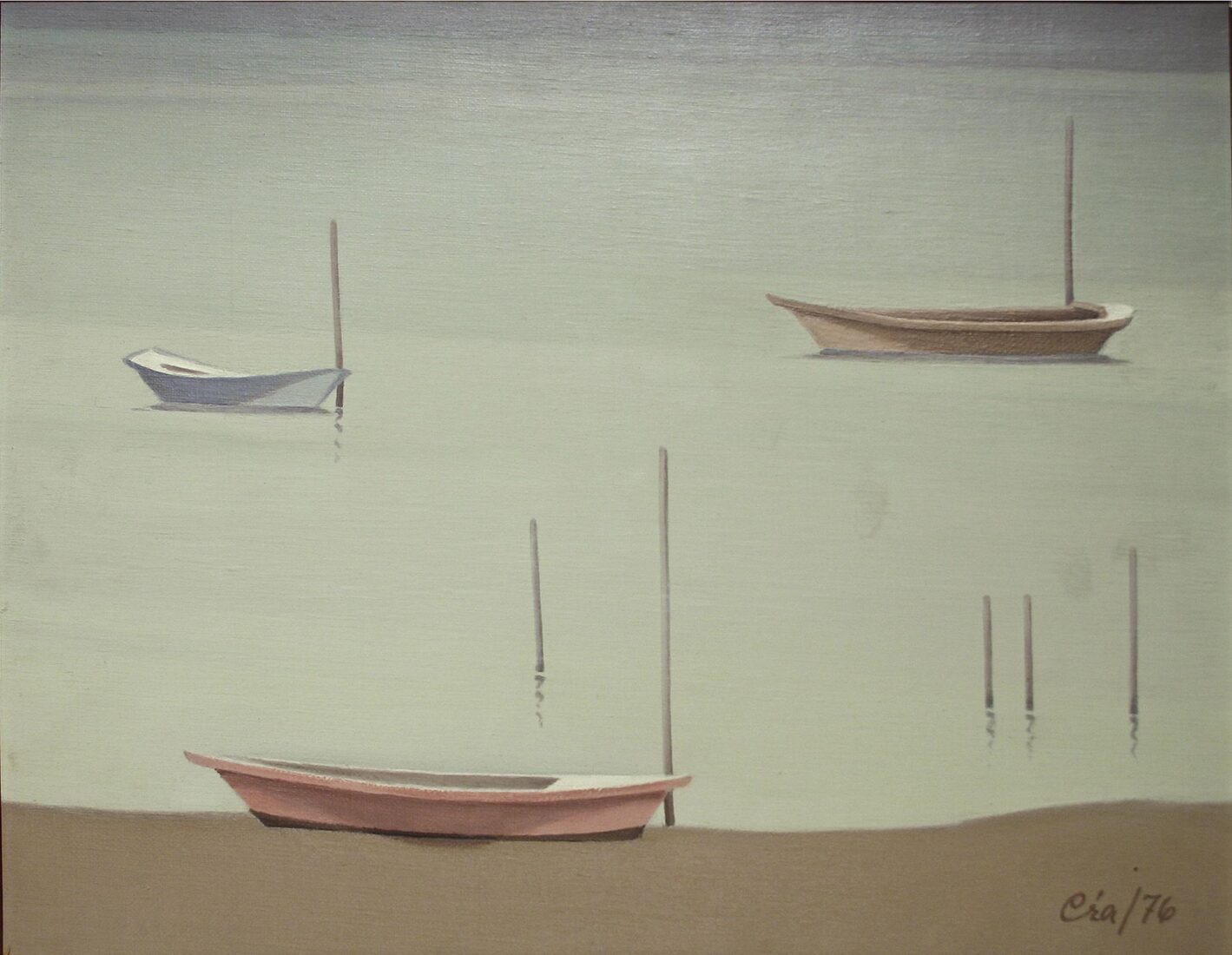
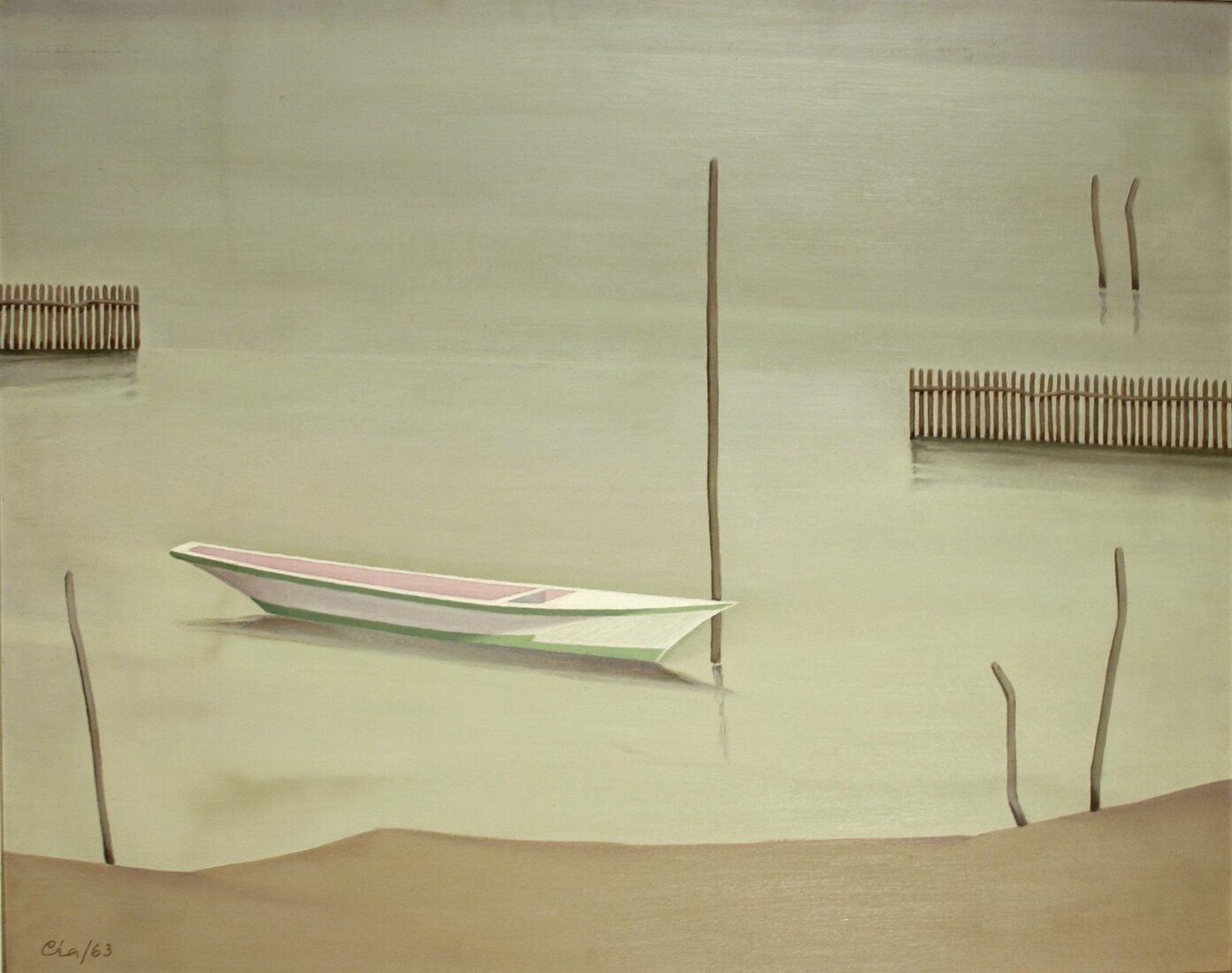
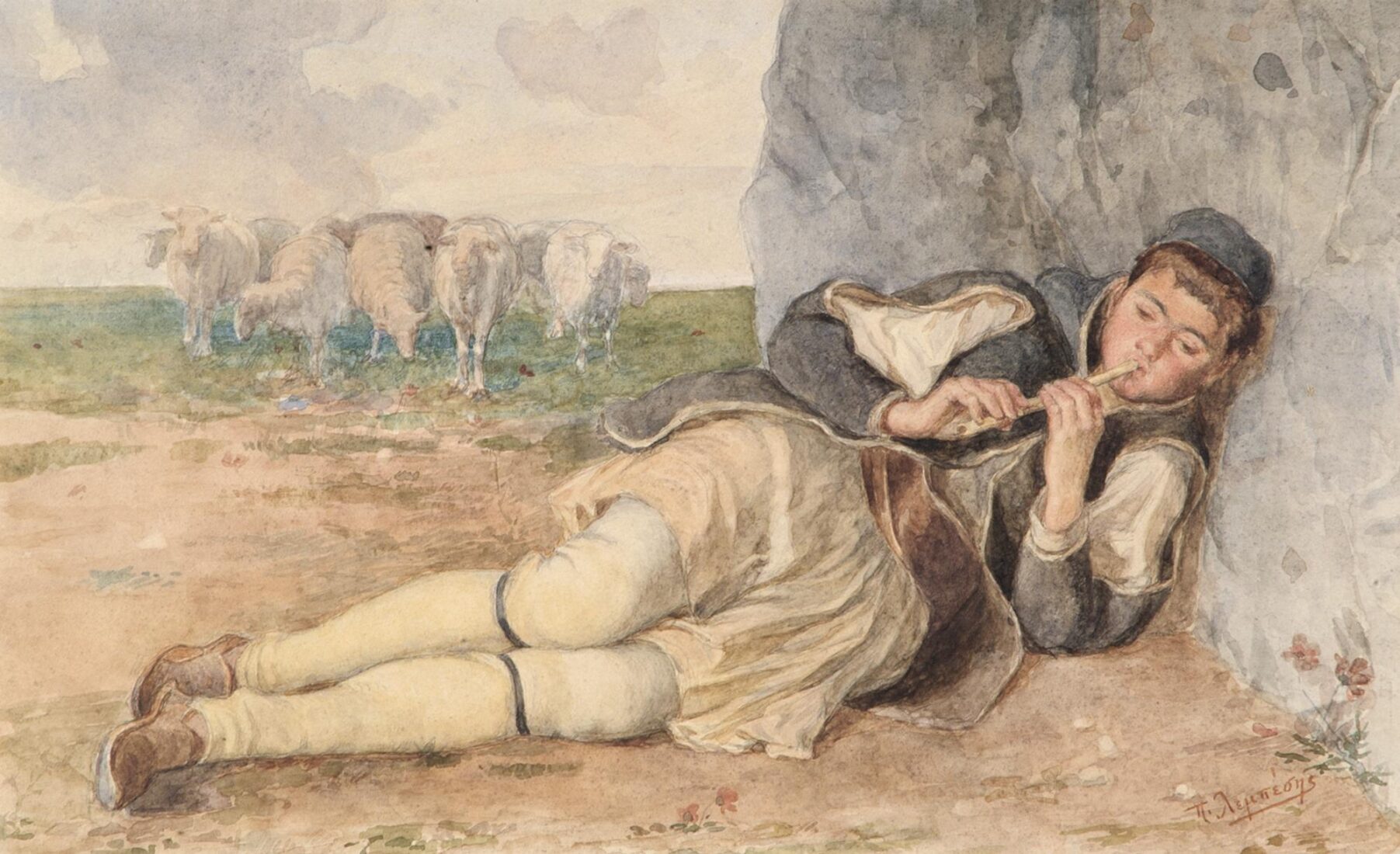
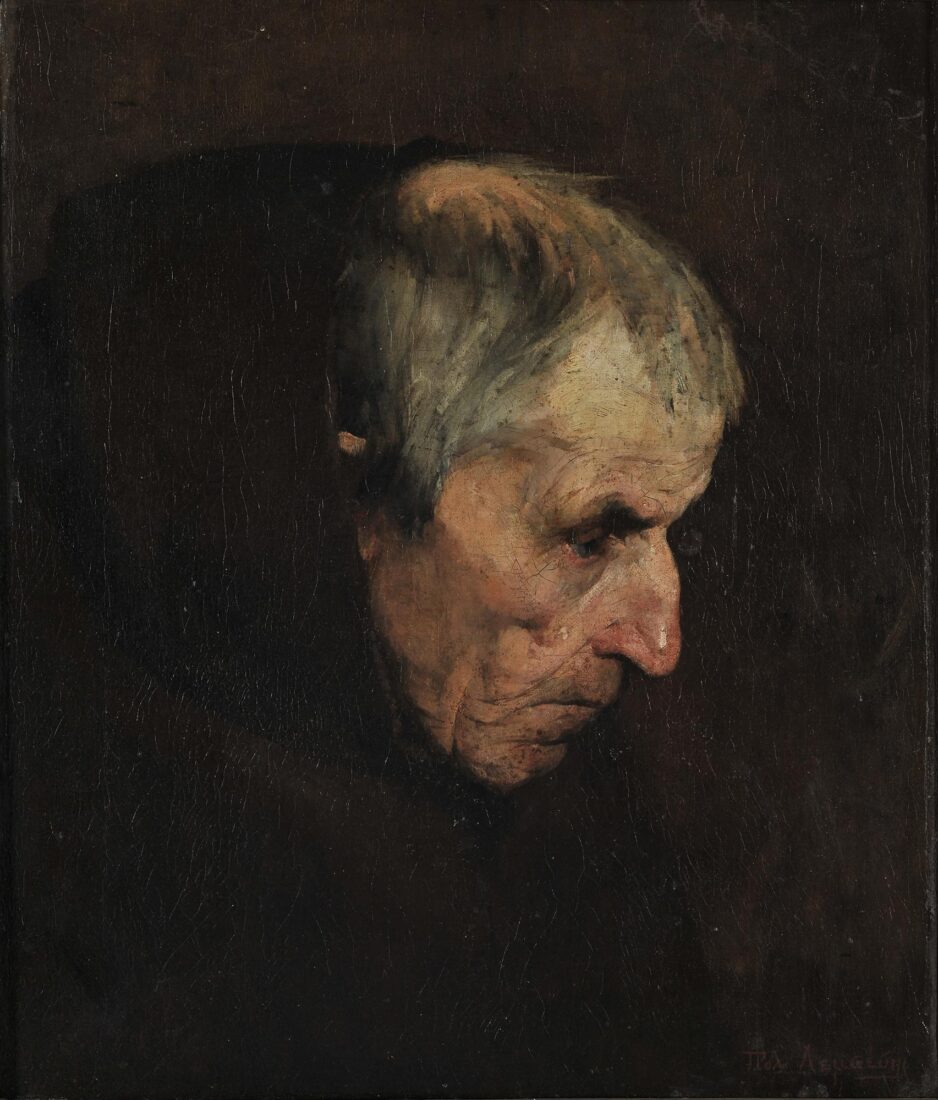
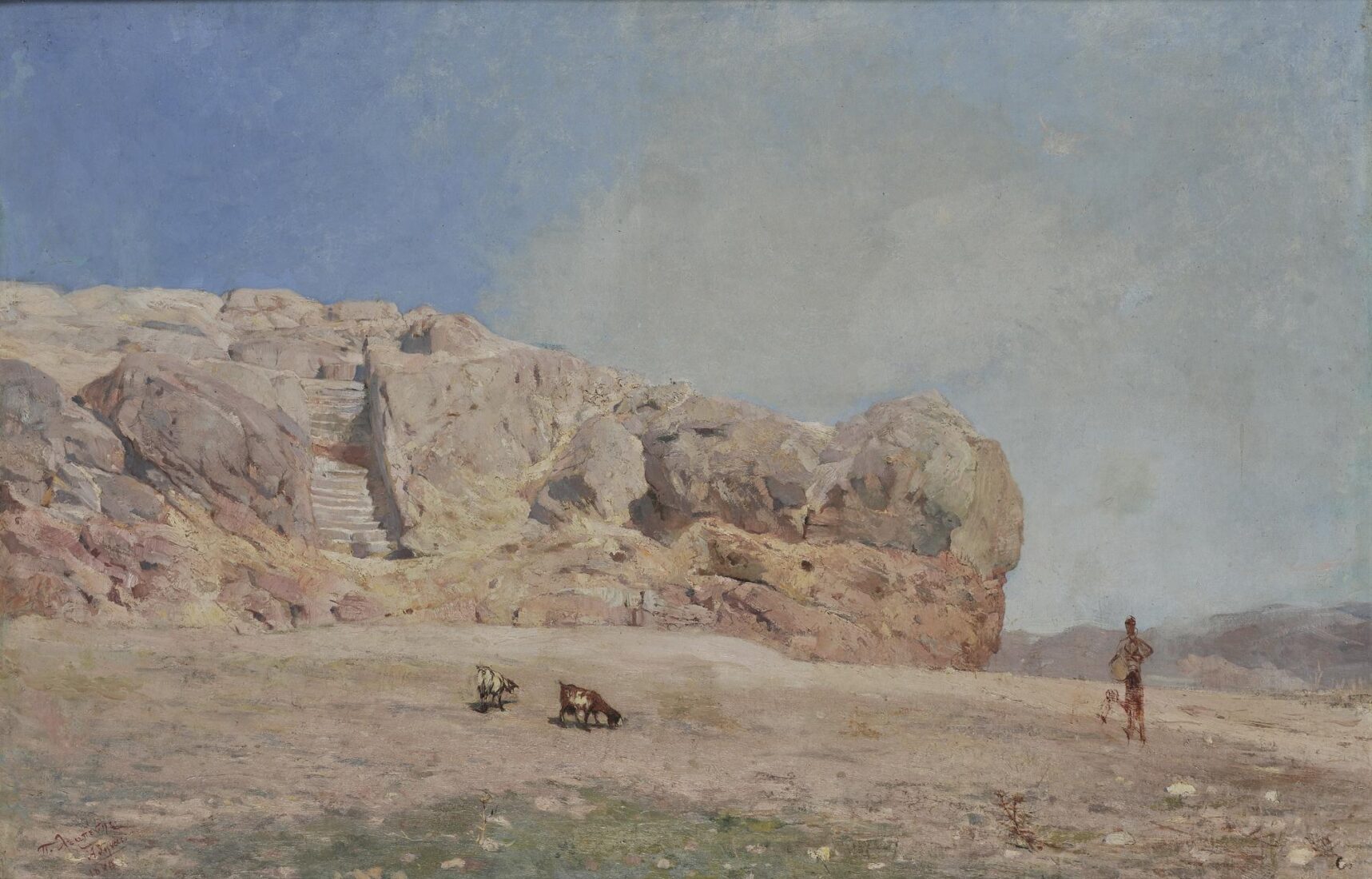
This painting and the “Areios Pagos” by Periklis Pantazis were produced during the same year, 1880, and their makers were friends, they may well have been made at the same time, as was the habit of Impressionist painters. It is interesting to compare the two paintings in order to find out how two painters coming from two different schools – Lembesis from Munich and Pantazis from Brussels – approached the historical rock of the Areios Pagos on a summer day. Let us first see the elements they have in common: the two paintings share the same dominant colour tonality, based on the interplay of gold-yellow ochre on the rock and grey-blue in the sky. In both paintings, shades are purple. Therefore, both painters are familiar with the Impressionist “recipe.” So, where is the difference to be found? In “writing,” in brushwork, and in rendering volume. Lembesis’ writing is meticulous; he draws and captures every detail in the subject. The rock, on the other hand, maintains all of its compactness, it is solid. On the other hand, let us see how Pantazis, who is more of a true impressionist, approached his subjects. His technique is utterly different. Here, free brushwork can be seen at work, “building” the form. The rock is not trapped within a closed outline; rather, it is an open form. Also note the sky and the clouds, rendered in the most agile brushwork. In the dry Attic light, of course, forms maintain their shape, they are easy to draw clearly. One is therefore at a loss as to which painting is the most faithful interpretation of reality.
